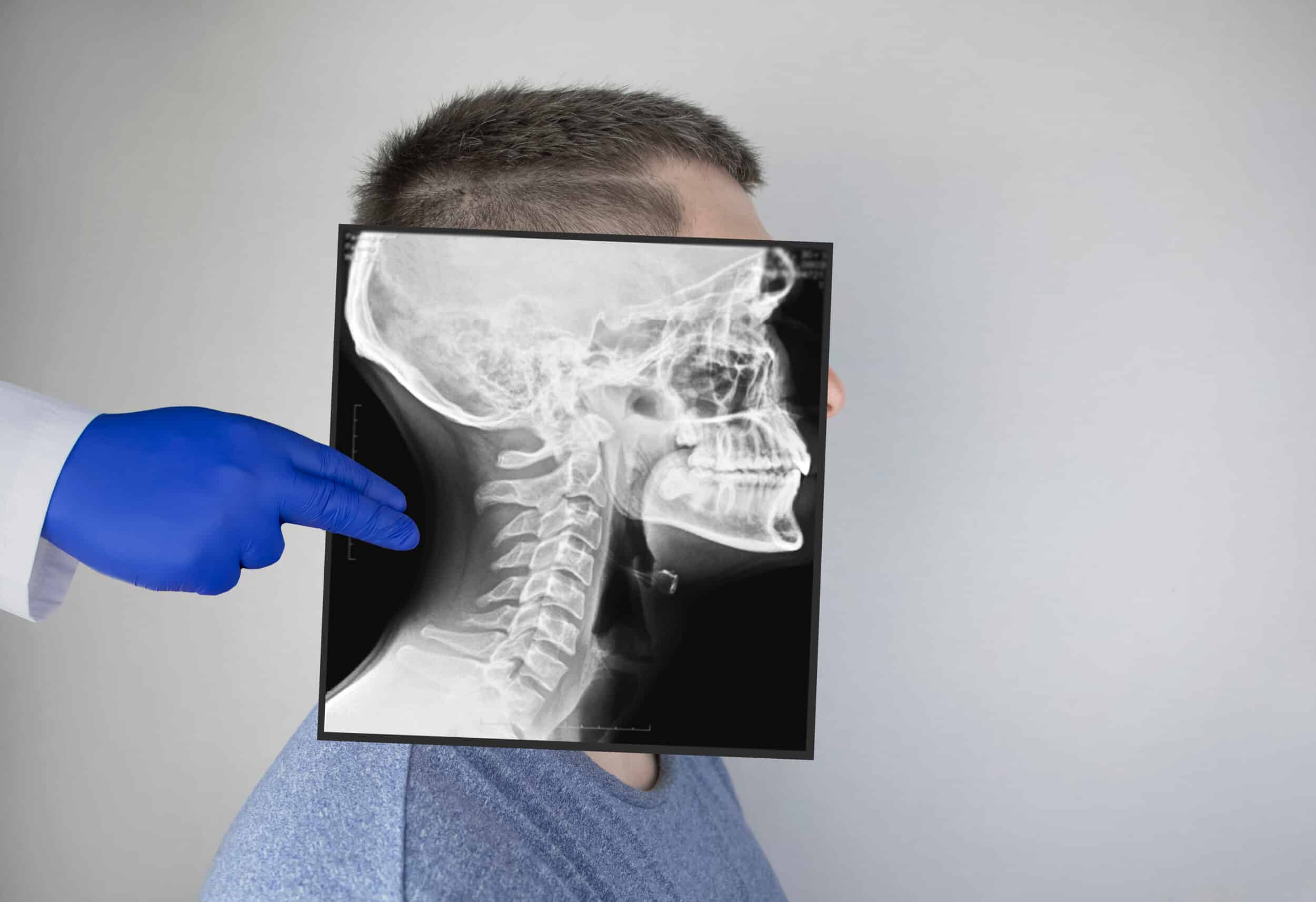
Experiencing facial trauma can be both physically and emotionally distressing. At the Oral and Facial Surgery Institute of Houston (OFSIH), we provide expert care to help you regain your confidence and well-being.
Dr. L.T. Johnson, a board-certified oral and maxillofacial surgeon, leads our team. We offer personalized treatment plans to restore facial functionality and appearance. To schedule a consultation, call us at 281-491-4545.
Facial Trauma Causes
Numerous events can lead to facial trauma. Some of the most common ones include:
- Sports injuries
- Accidents in the home
- Work-related injuries
- Motor vehicle accidents
- Physical assaults
- Falls
Activities that increase the risk of impact to the face, such as contact sports or high-risk jobs, can also lead to more severe facial injuries. In some cases, even everyday activities gone awry, like slipping in the bathroom or tripping over furniture, can result in trauma to the face.
Common Facial Injuries
Some of the more commonly seen facial trauma injuries include:
- Fractured jaws (upper and lower jaw)
- Chipped teeth
- Avulsed (knocked-out) teeth
- Facial lacerations
- Intraoral lacerations

Why Should an Oral and Maxillofacial Surgeon Treat Facial Trauma?
Oral and maxillofacial surgeons specialize in treating various facial injuries, including those affecting the jaws, mouth, teeth, and facial bones.
These specialists are trained in dentistry, complex facial reconstructions, and emergency care. They are skilled in addressing the aesthetic and functional aspects of facial trauma, preserving the patient's facial appearance and abilities (like chewing and speaking) to the best possible extent.
An oral and maxillofacial surgeon's comprehensive training in the intricate anatomy of the face allows them to perform procedures that minimize scarring and promote effective healing. Their expertise is crucial for optimal recovery.
What to Do Immediately After Experiencing Facial Trauma
Immediately after experiencing facial trauma, take the following steps:
- Assess the situation and check for any life-threatening injuries.
- If there is heavy bleeding, apply gentle pressure with a clean cloth to control it.
- Keep your head elevated to reduce swelling and avoid lying flat.
- If you suspect a fracture, do not attempt to reposition the bones yourself.
- Apply a cold compress to the injured area to help reduce swelling and pain.
- Avoid eating or drinking if you have sustained a jaw injury to prevent further complications.
You should also seek immediate medical attention, especially if there are signs of severe injury, such as difficulty breathing, vision problems, or significant pain.
For a thorough evaluation and treatment, contact the Oral and Facial Surgery Institute of Houston or visit the nearest emergency room.
Reconstructive Solutions for Facial Trauma
Bone Grafting and Jaw Reconstruction
Bone grafting restores lost bone in the jaw. It's often necessary after trauma, fractures, or tooth loss. This procedure involves using bone from another part of the body or synthetic materials to rebuild the jaw's structure.
Jaw reconstruction may also involve repositioning bones for proper alignment. This improves function and restores facial symmetry.
Patients who have suffered severe facial trauma often need bone grafting to provide sufficient support. Advanced techniques, including guided tissue regeneration and 3D imaging, ensure precise reconstruction, improving aesthetics, speech, and chewing ability after injury.
Dental Implants for Missing Teeth
Dental implants are a long-term solution for teeth lost due to facial trauma. These titanium posts are surgically placed into the jawbone, acting as artificial tooth roots to support crowns, bridges, or dentures.
Implants help maintain jawbone structure, prevent bone loss, and restore a natural-looking smile. Unlike traditional dentures, they provide a stable and functional replacement for missing teeth.
Scar Revision and Soft Tissue Repair
Scar revision and soft tissue repair aim to improve the appearance and function of facial scars caused by trauma.
Treatments may include laser therapy, dermabrasion, injectable fillers, or surgical excision depending on the severity. For deeper injuries, reconstructive techniques such as skin grafts or flap surgery help restore natural contours.
Beyond cosmetic improvement, these procedures address functional concerns, such as restricted movement due to scar contraction. With modern techniques, patients can achieve smoother, less noticeable scars and regain confidence in their appearance.
When Is Surgery Necessary for Facial Trauma?
Surgery for facial trauma is necessary when injuries compromise function, stability, or appearance. It is often required in the following cases:
- Fractures Affecting Function: Broken jawbones, cheekbones, or eye sockets that interfere with eating, speaking, or vision often need surgical repair.
- Severe Soft Tissue Damage: Deep lacerations, avulsions, or injuries near nerves, blood vessels, or the eyes may require surgical reconstruction.
- Displaced or Unstable Fractures: Bones that are misaligned or at risk of improper healing may need repositioning and stabilization with plates or screws.
- Dental and Jaw Trauma: When teeth are lost or jaw alignment is affected, surgery restores structure for proper function.
- Cosmetic and Reconstructive Needs: If facial injuries cause significant disfigurement, surgery helps restore a natural appearance.
Facial Trauma Surgery Recovery

The recovery process after facial trauma surgery varies based on the severity of the injury and the procedures performed. Here's what patients can generally expect.
Immediate Post-Surgery Period (First Few Days)
- Swelling and bruising are common and peak within 48-72 hours.
- Pain and discomfort can be managed with prescribed or over-the-counter medications.
- A liquid or soft food diet may be necessary if jaw fractures are involved.
- Stitches (if used) may dissolve on their own or require removal within a week.
First Few Weeks
- Swelling gradually subsides, and bruising fades.
- Patients should avoid strenuous activity to prevent complications.
- Follow-up appointments monitor healing progress.
Long-Term Recovery (Months Later)
- Full healing of bones and soft tissues can take several months.
- Physical therapy may be recommended if jaw function or facial muscles are affected.
- Scar management, including laser therapy or silicone treatments, can help minimize visible scarring.
FAQs
Are All Facial Trauma Cases Treated the Same Way?
No, the treatment of facial trauma varies widely depending on the type and severity of the injury.
Treatment plans are highly individualized, considering each patient's specific needs and circumstances. For example, minor injuries such as small cuts or bruises may only require basic wound care and monitoring. In contrast, more severe injuries like fractures or extensive lacerations may necessitate surgical intervention.
The patient's overall health, the presence of other injuries, and the potential for functional impairment are also important considerations in determining the appropriate treatment approach.
Why Is Prompt Treatment of Facial Trauma Important?
Prompt treatment of facial trauma is crucial to prevent complications, such as infection, significant blood loss, or long-term disfigurement. Early medical intervention can also help ensure better healing outcomes, reduce the risk of permanent damage, and expedite recovery.
For severe injuries, immediate treatment is necessary to maintain vital functions like breathing, vision, and the ability to eat and speak.
What Can I Do to Prevent Facial Trauma?
While accidents can't always be avoided, there are steps you can take to reduce the risk of facial trauma:
- Wear Protective Gear: Always use helmets, faceguards, and other protective equipment during sports and high-risk activities.
- Use Seatbelts: Always wear a seatbelt while driving or riding in a vehicle to reduce the risk of injury during accidents.
- Maintain a Safe Home: Keep your home free of hazards that could cause falls, and use protective gear when engaging in home improvement projects.
- Avoid Physical Altercations: Try to avoid situations that could lead to physical fights or altercations.
Why Choose the Oral and Facial Surgery Institute of Houston?
Choosing the Oral and Facial Surgery Institute of Houston means entrusting your care to Dr. L.T. Johnson. He is a board-certified oral and maxillofacial surgeon with years of experience treating complex facial injuries. Dr. Johnson combines his expertise with advanced techniques to deliver personalized and effective surgical treatments.
Serving patients in the Houston and Sugar Land areas, the Institute is renowned for its state-of-the-art facility and compassionate approach to care. Whether addressing facial trauma, fractures, or reconstructive needs, Dr. Johnson and his team ensure you receive superior care to help you look and feel your best.
Schedule a Consultation in Houston, TX
If you or a loved one has experienced facial trauma, don't hesitate to seek help. The Oral and Facial Surgery Institute of Houston is here for patients in and around the Houston and Pasadena areas. Contact OFSIH today. Call 281-491-4545 to schedule a consultation.

